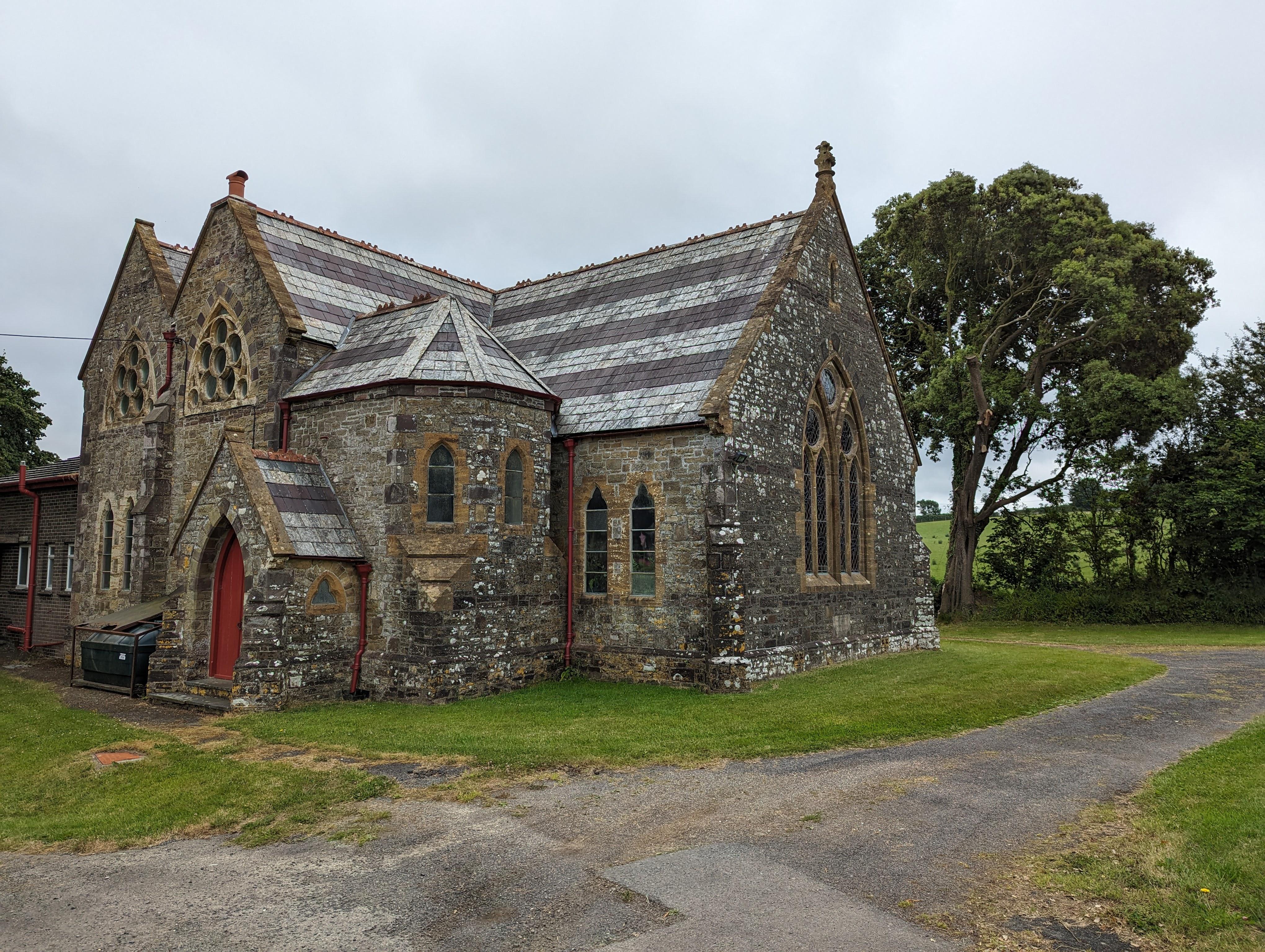St Peter
Tawstock, Devon
St Peter’s is an unusually large church for Devon, and is sometimes known as the little Cathedral of Devon.

Built in 1873 to hold 240 people by at that time 12 original members, some of their relations still members of the church today.
Marwood , Devon
The Methodist movement started in Marwood in 1806. In 1872 it was proposed that a new chapel should be built. The ground cost £36 and was purchased from John Alford. The architect was Alexander Lauder who was not only a lay preacher but noted artist and proprietor of the North Devon Pottery. The new chapel incorporated an auditorium with two bay north and south transepts with galleries with wrought iron fronts. Multilateral stair towers are located in the western angles of the transepts, with porches on the north and south sides of the stair towers. The opening service took place on 9th October 1874 exactly one year after the foundation stone was laid.
In 1958 Mrs Annie Gubb donated a stained glass window to the chapel in memory of her father, John Smith, who had been a preacher on the Ilfracombe circuit for over 50 years. The window aptly depicts John Wesley, one of the founders of the Methodist movement.
Much has changed over the last 150 years since the opening of the chapel at Marwood. Services in recent years have included Harvest celebrations; including a lively auction of produce, candlelit carol services, pet services and the Blessing of the Plough.
Tawstock, Devon
St Peter’s is an unusually large church for Devon, and is sometimes known as the little Cathedral of Devon.
Stoke Rivers, Devon
A Grade I listed historic church which is valued by its community.
Instow, Devon
One of the highest churches on the North Devon coast, a landmark yet hidden from marauders; great views of Bideford Bay from the churchyard which is probably celtic in origin.